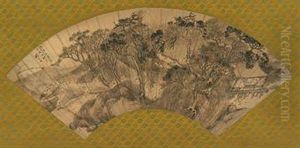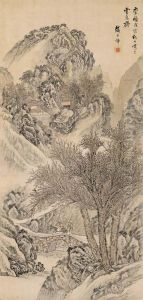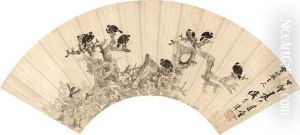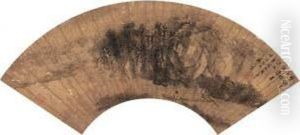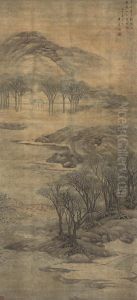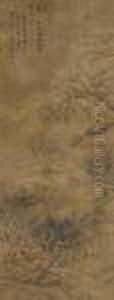Sheng Maoye Paintings
Sheng Maoye was a prominent Chinese painter, calligrapher, and poet during the late Ming Dynasty, born in 1580 and passing away in 1642. His life and work are emblematic of the period's rich cultural and artistic heritage, a time marked by both flourishing creativity and tumultuous social change. Sheng hailed from Huating (present-day Shanghai), a region known for its sophisticated cultural ambiance, which likely influenced his artistic development from a young age. Despite the lack of exhaustive biographical details, it is clear that Sheng Maoye's contributions to Chinese art were significant, particularly in the realm of painting.
His artistic oeuvre is primarily characterized by landscapes and bird-and-flower paintings, genres that were highly esteemed in Chinese art for their symbolic and aesthetic value. Sheng's style is often described as refined and graceful, with a notable emphasis on the expressive potential of brush and ink. He excelled in capturing the transient beauty of nature, imbuing his works with a sense of vitality and poetic sentiment. This approach not only demonstrates his technical prowess but also reflects the broader cultural pursuit of harmony between humanity and the natural world, a core tenet of traditional Chinese philosophy.
Beyond his artistic achievements, Sheng Maoye's life intersected with significant historical events, including the fall of the Ming Dynasty and the rise of the Qing Dynasty. These tumultuous times injected a sense of melancholy and reflection into his work, themes that resonated deeply with his contemporaries. Moreover, as a calligrapher and poet, Sheng was deeply engaged with the literary culture of his time, which further enriched his artistic output and placed him within a network of literati, scholars, and artists who played a crucial role in the cultural landscape of late Ming China.
In sum, Sheng Maoye's legacy is that of a versatile artist who adeptly navigated the worlds of painting, calligraphy, and poetry. His work not only offers a window into the aesthetic ideals and cultural values of his time but also continues to be celebrated for its beauty, technical mastery, and emotional depth. Despite the challenges of his era, Sheng's art remains a testament to the enduring spirit of creativity and the profound connection between art and life in Chinese history.
